Winter-hardy and attractive Veronica plant decorates many gardens of Russia. It is often grown in decorative purposes, and sometimes used as a medicament. For breeding, more than 500 types of culture were derived in the plots, among which there are perennials and annuals, and each species, in turn, is represented by several varieties. Our article will tell about the landing of Veronica and care.
Veronica flower: Description
Veronica refers to the family of plantain, although it also has signs of nettle and bells. On a flowerbed or a lawn, the set of these plants looks like a solid carpet, therefore they are often chosen as a background for flower arrangements, diluted with brighter stains.
The root system in Veronica differs depending on the species. Roots can be:
- filamentine and placed in surface layers of soil;
- fat, penetrating soil deep into;
- mesh, covering a large territory underground.
Perennial flowers of Veronica, as a rule, differ in a strong root system, which tolerate frost well. Thin roots are found in annual varieties.
The stem in culture is rather high and dense, has a cylinder form. There are views with reprehensive stems, and there are also those who are stealing on the ground. It is from the stems and depend on the decorative properties of Veronica. It should be noted that the above-ground part of the plants is quite strong, the plexus of the branches is obtained so strong that it is almost impossible to pull the part of the bush with hands.
As for the foliage, it has external signs of nettle: oval shape and carved edges, a small durability. True, Veroniki leaves do not leave burns on the body. Most types of foliage are bright green, but sometimes there are varieties with a grayish tint.
Wheel flower Veronica in nature exists mainly in blue color. But the cultivated plants are other shades: lilac, white, gentle blue, purple. The inflorescence of the plant has the form of a spikelet, tightly covered with small flowers of a bell-shaped species. They flourish not all at once, bloom begins to bottom of the stem and moves up. Because of this, Veronica blooms long enough. At that time, while the spikelet is already formed from the bottom, the top is still covered with flowers.
Garden trees of Veronica flower occur from wild analogs, therefore are very hardy, but moreover possess good decorativeness.
Types and varieties of Veronica flower
Plant species There are about 500, but gardeners choose the following popular options:
- Veronika Dubravnaya - culture-perennial with a hairy stem and rounded small leaves. Foliage in length reaches 3 cm, in width - 1.5 cm. Flowers relatively large flowers of a saturated blue shade. Kostik reaches a height of 40 cm, has a smaller root system with thin roots. It is grown mainly in Siberia.
- Veronica medicinal also refers to perennials. She blooms blue, sometimes with pink spikelets. Flowering is long, because culture decorates flowerbed for a whole summer. It has medicinal properties for which they deserve their name.
- Veronica field can be grown as an annual and as a twin one. This herbaceous grade is in height reaches a maximum of 30 cm. The shade of flowers is white or blue, the flowers themselves are small. This species grows more often on the mountain slopes or in the fields, the flowering period falls on May-June. Field Veronica is also distinguished by medicinal properties, with its help is treated with rhinitis, laryngitis, cough and some dermatological diseases.
- Veronica is a filamental - short, up to 5 cm in the height of a perennial. Thin stems of this variety are steel along the ground carpet. His foliage is round, bright green, blooms soft blue or white. The duration of flowering is 2.5-3 months - from April to June.
- Veronica is a big - tall view with a thick root. The stalks reach it in a height of 70 cm. The foliage in the bottom is pubescent, the top is smooth. The shade of bright blue buds. Very frost. This species is represented by such varieties: True Blue, Miffy Blue, Schirly Blue.
- Veronica Pri Prosvkova is often found in the Crimea, in the countries of Central Asia and in the Caucasus. Differs in a small amount of foliage, blooms white, light blue flowers. Her popular varieties: Variagat, Teszington White.
- Veronica Koloskova - This species grows in the Caucasus and in Russia, as well as in Asian countries and in the Mediterranean. Its color gamut is quite extensive and diverse, represented by shades from white to purple. Popular varieties of this species: Romili Perf, Blue Peter, Barcaroll, Red Fox, Heidekind, Rotfishz, Isycle and White Isice.
Veronica flower, photo:
Features of Growing Veronica Flower
Pluses culture a lot, because of what it is popular among gardeners. In addition to the rich color scheme, the plant is distinguished by unpretentiousness, ease of care. Here are the main rules for the cultivation of this culture:
- Veronica loves the sun. For her, it is better to break a flower leaf in well-lit parts of the garden, where the sun's rays will fall from the morning to the evening. It will be able to grow in shaders, but will not bloom so beautifully, will lose its decorativeness.
- Watering plants directly depends on the variety. Having planted some particular view on its plot, read how much water for watering it will require and how often it is necessary to irrigate bushes. As a rule, peeling herbaceous varieties need regular watering, in dry conditions, they stop blossoming and over time they die. But views with the high stem with drought and hot weather cope easier.
- It is desirable to feed Veronica if you want to get a beautiful abundant bloom. Organic fertilizers are introduced in a liquid form, making it during bootonization or flowering. Wild-growing species are perfect and without feeding, if they grow in a fairly nutritional soil.
- Veroniki varieties with a reprehensive stem must be a garter, otherwise the wind will bend them to the ground, and even can break it at all. For garter, you can use scroll rods or staketins.
- Perennial species prepare for wintering, cutting off the ground part. Roots are covered with peat, sweetheart, foliage or humus.
Veronica flower reproduction
Seed method of breeding Veronica flower
Veronica flower is often bred by seeds. They are sow late in autumn. With this method of flowering, you can expect only 2 years after 2 years. Sometimes sowing is carried out in the spring, but then the seeds should be stratified. Stratification and germination of seeds is true:
- Prepare seeds since February. Moisten them with water, wrap the cloth in the wet and put in the package. Send to the refrigerator for about a month.
- In March, grain can be planted on seedlings in cups or containers. Prepare a nutritious substrate, put the grains every 5 cm or one to each small cup.
- Top covers the seeds with a thin layer of soil and slightly moisten from the sprayer.
- Cover the tank with the film and wait for the sprouts. As soon as they appear, remove the film and stop the container with the seedle on the light window sill.
- Water regularly as the earth dries. Please note that drainage has been made in containers or cups.
- Veronica's sprouts can be transplanted on the flowerbed when 8-10 leaves appear on them.
If you plant seeds in the fall, then this can be done immediately into open soil, and the stratification in this case is not needed.
Veronica flower breeding a bush
The division of the bush is convenient to multiply the culture for preserving the varietal signs and for rapid flowering. Buds appear on new plants in the first year after landing. To obtain a deduce, choose a large bush, a shovel or a knife is cut down several sprouts along with part of the root. Parts of the bush transplant in a new place and covered with a film for 10 days. Then film is removed. Veronica spread in this way in the absence of flowering, that is, in spring or autumn.
Veronica Cutting Flower Transplant
Cuttings are cut from large healthy copies, the length of such sprouts should be about 10 cm. The cuttings are placed in water until germination, in which Kornin serve can accelerate this process.
When the roots appear, the sprouts can be transferred to the flower. It is possible to germinate cuttings immediately in the soil, just before that they still need to hold a few hours in Kornvin, and the soil pick up the nutritious. They also need to be covered with a film until they take place in the ground.
The reproduction of stalling is carried out in August, and the plant blooms the next year.
Diseases and pests Veronica flower
Veronica's care includes preventive and healing measures aimed at eliminating pests. Here are some dangers to threaten this plant:
- Too moisturized section or long-term destruction in the shade sometimes lead to the appearance of false mildew. It looks like a gray raid on the foliage. Fight with this problem with a fungicidal solution using phytosporin, alin-b, gamiir.
- Sometimes the culture is striking the ring spotting virus. You can get rid of it only with an infected plant. Then the whole flowerbed must be treated with non-natocides. Divide this virus nematodes who live in the soil.
- The caterpillars can also attack the plant. They feed on the leaves and shoots, and to get rid of the caterpillars, it is necessary to warm up the ground, it is poured on time and take a small break in irrigation.
- If pliers, scoops or long moths attacked Veronica, can be treated by flower insecticides.

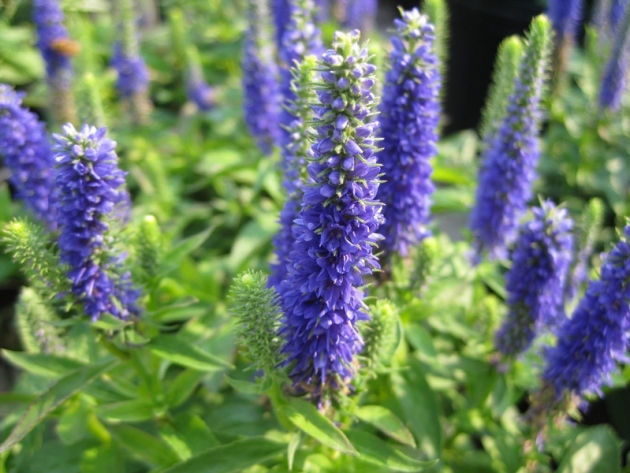
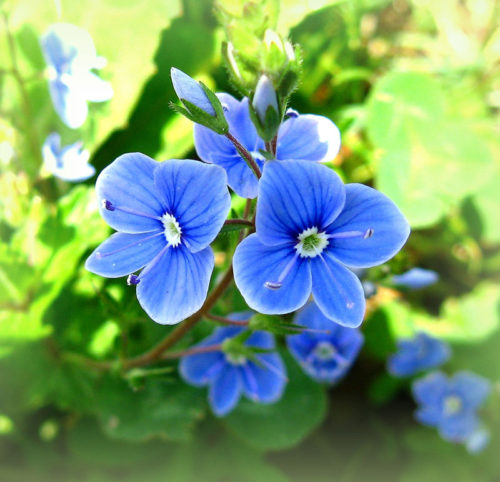
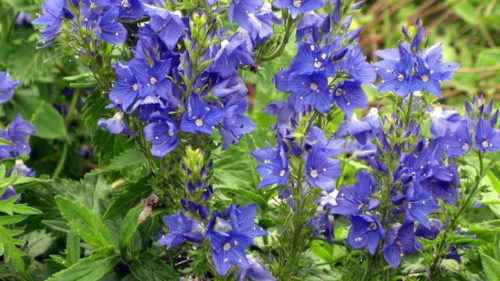
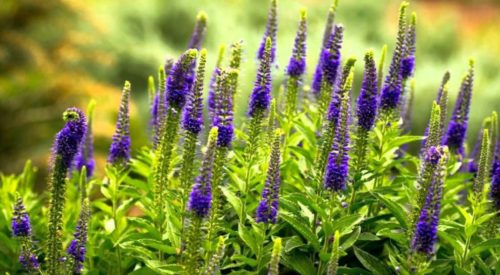
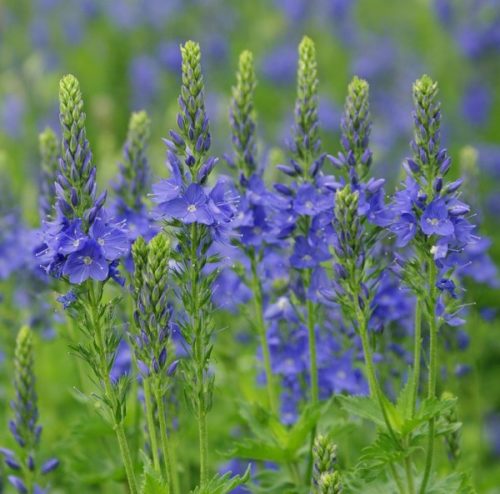
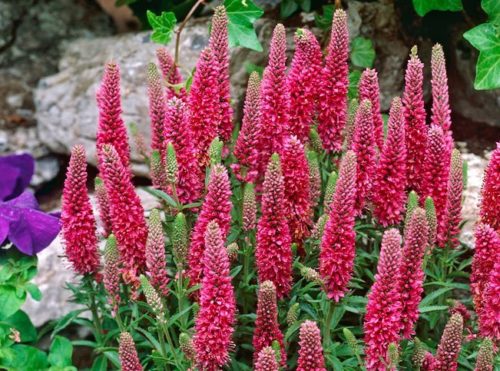
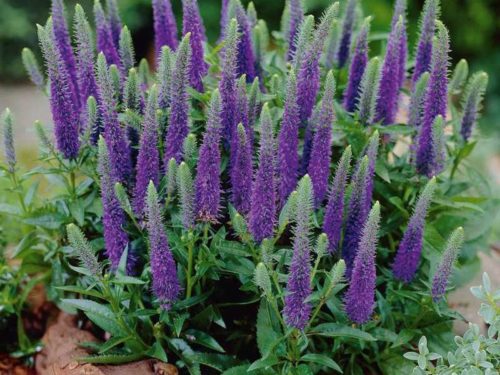
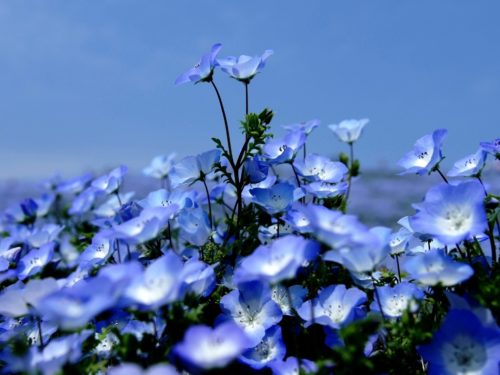
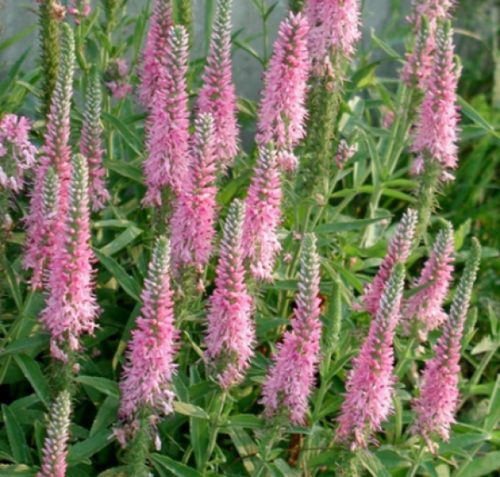
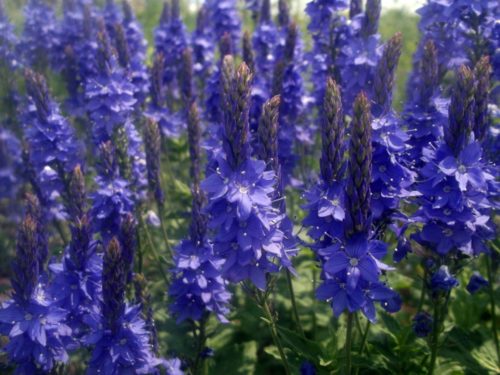
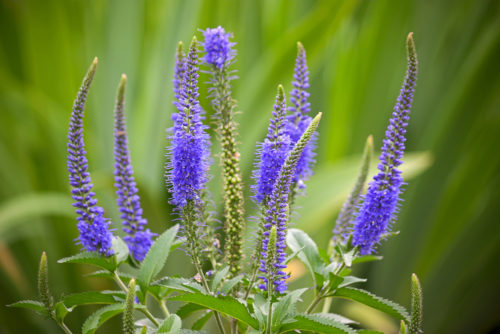












 Start a discussion ...
Start a discussion ...